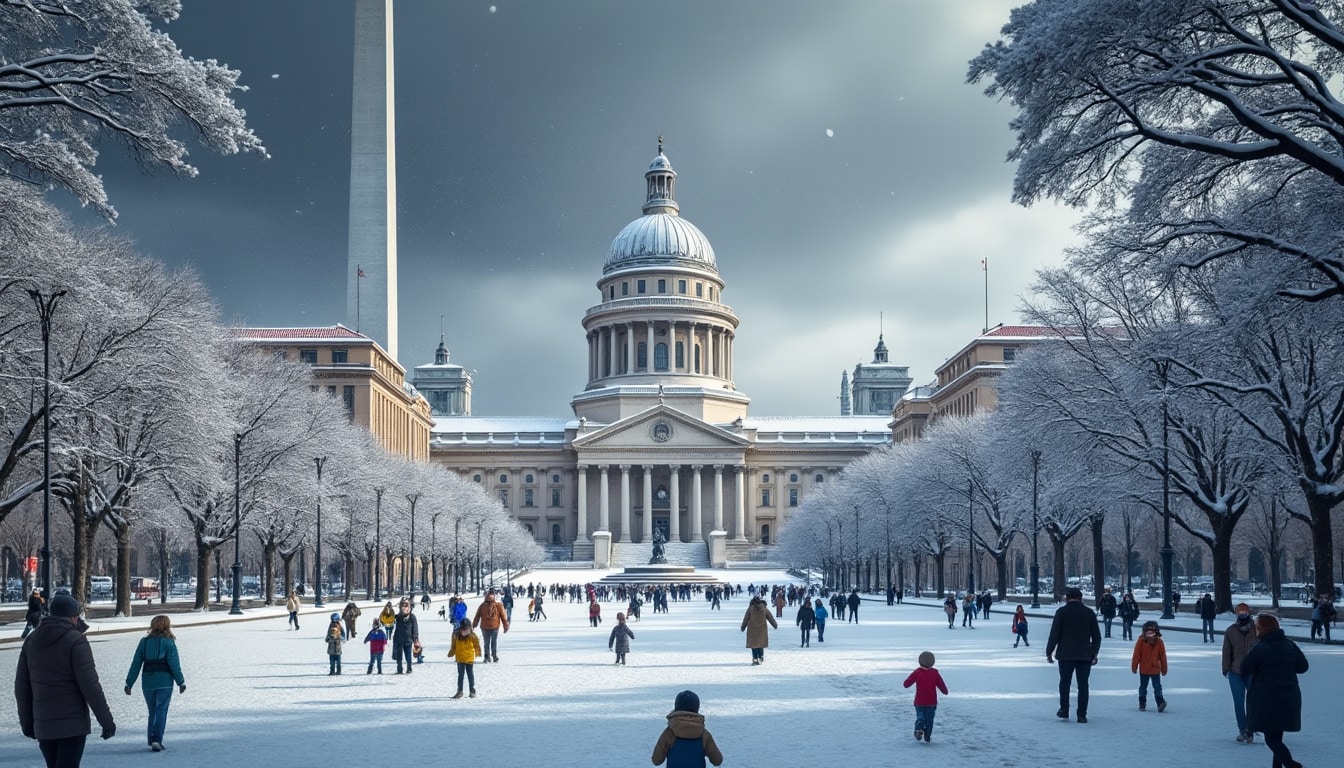Buenos Aires, a city renowned for its vibrant street life, rhythmic tango, and eclectic architecture, is also a subject of meteorological curiosity. Nestled on the southeastern coast of South America, Buenos Aires experiences a humid subtropical climate, defined by hot, humid summers and relatively mild winters. This raises the question that many travelers and locals alike ponder: Does it snow in Buenos Aires? Although snow is an uncommon event in this bustling metropolis, the city’s rich climate history provides layers of intrigue regarding its sporadic encounters with this wintry weather phenomenon. ✨
Buenos Aires’ Climate: A Contradiction to Snow
The capital city of Argentina is blessed with an overall temperate climate, often thanks to its geographical positioning near the Rio de la Plata. Its climatic identity is that of a humid subtropical zone. This fact alone would suggest that snow is unlikely. However, Buenos Aires defies the usual climatic expectations occasionally. But before delving into those rare snowy occurrences, let’s explore what predominantly characterizes the city’s climate year-round. ☁️
With its humid subtropical climate, Buenos Aires experiences four distinct seasons each year. Summers (December to February) are characterized by high humidity and sweltering temperatures, with January being the hottest month, reaching an average of 83 degrees Fahrenheit (28 degrees Celsius). These months also see the most rainfall, with thunderstorms frequent thanks to moist winds blowing in from the north of Argentina. Spring and fall are seen as the most pleasant times to visit, with moderate temperatures varying between 64 and 78 degrees Fahrenheit (18-26 degrees Celsius). Meanwhile, winters bring cooler yet still mild conditions compared to other parts of the continent, with July presenting an average low of 58 degrees Fahrenheit (14 degrees Celsius). 🌡️
Yet, the Buenos Aires winters are bifurcated by the occasional whimsy—such as the snowy episode in July 2007, a rarity only recorded a few times in the city’s extensive meteorological archives which are dating back to 1906. But why is snow so rare here? The presence of a coastal urban heat island effect plays a significant role. Heat islands occur when urban areas are significantly warmer than their rural surroundings due to human activities and urban infrastructure. In Buenos Aires, this effect can artificially elevate temperatures by 1.5 to 3.5 degrees Celsius, making snowfall not just unusual but an outlandish meteorological event.
Despite this prevailing warmth, Buenos Aires remains susceptible to climatic variances. These are further compounded by the strong winds such as the “Pampero,” which delivers cold air from the south, and the “Sudestada,” known for bringing in gusty and rainy conditions from the southeast. Such contrasting winds contribute to the city’s history of fluctuating temperatures, and on occasion, the surprise snowfall. ❄️
When confronting Buenos Aires’ climatic oddities, it’s essential to comprehend the blend of geographical, atmospheric, and human-induced factors that make snowfall in this bustling Argentinean hub a tantalizing rarity rather than a regular winter event.
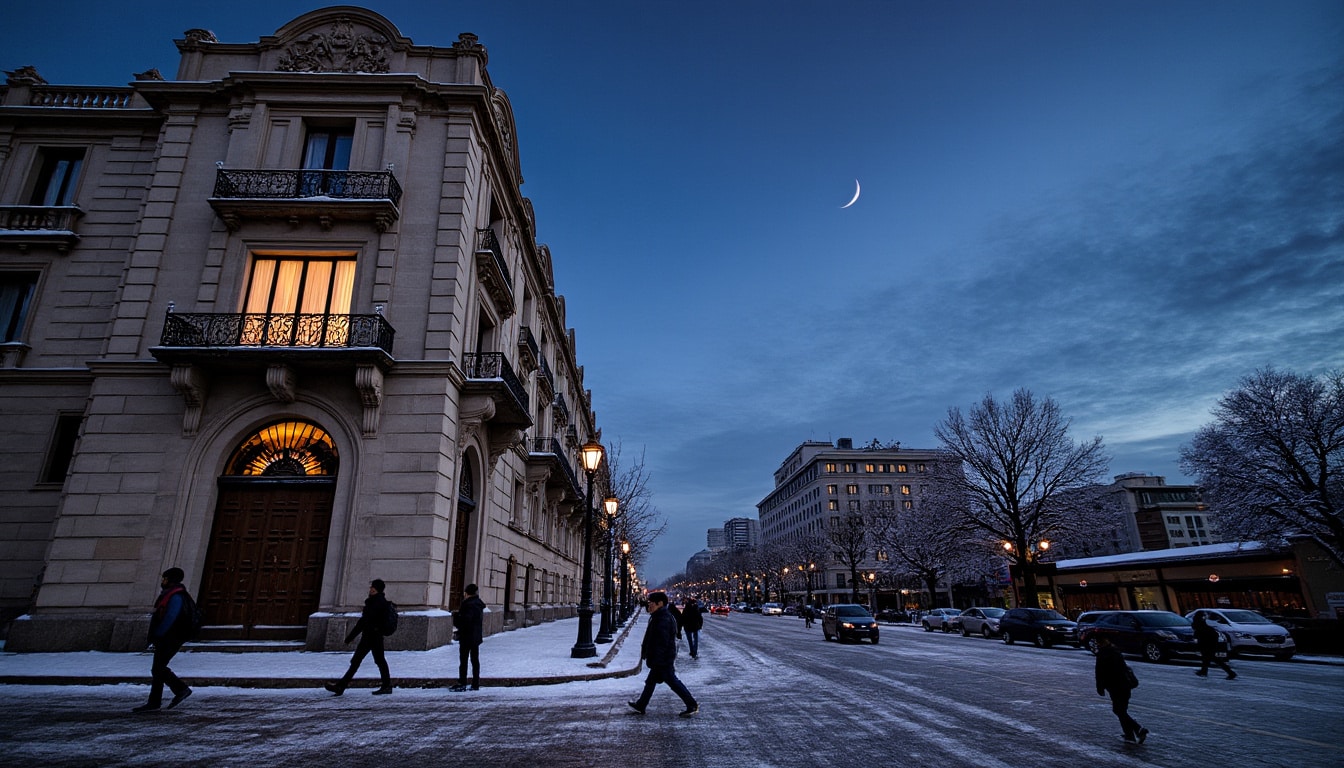
The Winds that Shape Buenos Aires’ Weather Patterns
Central to Buenos Aires’ climate are the winds, notably the Pampero and the Sudestada. The Pampero is a cold, dry wind that typically follows a cold front, leading to cooler temperatures and a decrease in moisture. On the flip side, the Sudestada—distinguished by warm, moist air—can result in prolonged precipitation and cooler, cloudier days.
- 🌬️ Pampero: Cold, dry, decreases humidity.
- 🌧️ Sudestada: Warm, moist, increases precipitation.
The Historical Snowfall Incidents in Buenos Aires
Rumors of snow in Buenos Aires often conjure images of an urban landscape transformed with a soft, white layer. Yet, such scenes are the exception rather than the norm. Historical records have shown only three significant snowfall events in the city’s extensive meteorological history. Let’s dive into these climactic anomalies and understand the stories behind them. 🕰️
The first recorded snowfall in the modern era occurred in June 1918. At that time, Buenos Aires bore witness to flurries mostly concentrated around the city’s grand architecture and sprawling parks. A decade later, in July 1928, residents once more awoke to an unexpected winter wonder, with snow blanketing the streets and confounding expectations. These snowfalls were pivotal moments, frozen in time, documented with black-and-white photography, providing a tangible connection to the city’s unpredictable climate past. 📸
More recently, in July 2007, Buenos Aires experienced a rare snowstorm that delighted the city’s inhabitants and captivated worldwide attention. For many, it was a once-in-a-lifetime experience to enjoy snowball fights in Plaza de Mayo or witness snow-capped obelisks amidst the tango-filled streets of San Telmo. This snowfall was recorded during a cold snap when exceptional atmospheric conditions converged to create the city’s third documented snowfall in nearly a century.
These snowfall events are more than mere meteorological data points; they are cultural bookmarks, each with their narratives of surprise and community joy. They signal unusual atmospheric alignments where cold fronts manage to penetrate the typically warm confines of the coastal city, defying the urban heat island effect. These events further highlight the climatic complexity of Buenos Aires, making every snowfall a celebrated spectacle.
While these incidents remain infrequent, they serve as reminders of the natural world’s whimsical wavering from predictable paths. For meteorologists and city dwellers alike, these snowfalls offer a glimpse into the complexity and beauty of Buenos Aires’ climatic tapestry.
A Closer Look at the 2007 Snowfall
July 2007’s snowfall is an event that continues to capture the imagination. What catalyzed this unexpected winter tale? A combination of low pressure systems and strong cold air intrusion provided the ideal conditions. While the snow was light, covering only local grounds without causing major disruptions, the historical value was immense, reviving conversations about the city’s seldom-seen winter wonder.
- 📅 Date: July 9, 2007
- 🌡️ Temperature: Unusually low, due to strong cold front
- 🌧️ Type: Light snow flurries, limited accumulation
Why Snow Remains a Rarity in Buenos Aires
As intriguing as these snowfalls are, the question remains: Why is snow such an anomaly in Buenos Aires? In terms of time, proximity to equatorial warmth and atmospheric dynamics largely define the city’s typical climate as snow-free. However, a deeper dive into climatological influences reveals more intricate explanations. 🌐
One major factor is the city’s situation within the vast and open Pampas plains, which allow for variable weather patterns primarily influenced by shifting air masses. The maritime location of Buenos Aires induces relatively stable temperate conditions, buffered by the adjacent Atlantic Ocean’s moderating effects.
The pattern of winds also plays a crucial role. While winds like the Pampero and Sudestada can disrupt typical weather conditions, they don’t always align to bring the freezing temperatures and moisture essential for snowfall. For most winters, Buenos Aires experiences only mild cooling, which is typically insufficient to produce snow. 🌬️
When examining temperature fluctuations, Buenos Aires has experienced extremely low temperatures, but prolonged cold snaps are infrequent. Moreover, snow around the urban heat island effect occurs because once-in-a-lifetime atmospheric conditions manipulate the natural balance, reducing the typical ambient heat surface generated by the urban core.
Furthermore, Buenos Aires is heavily influenced by global climatic patterns such as El Niño and La Niña, affecting its precipitation and temperature shifts seasonally. During El Niño events, the city can experience above-average rainfall and warmer winters, further reducing the likelihood of snow.
The coastal city’s topography, paired with its dynamic weather patterns, largely defines its reputation as a snow-free locale. Yet, the rare incursions of snow remain a testament to the complex interplay of various climatic factors.
Impact of Global Climate Patterns
Global climate phenomena significantly impact Buenos Aires’ weather. For instance, El Niño tends to elevate winter temperatures and increase rainfall, lessening the chance of snow. Conversely, La Niña could bring cooler, drier conditions, albeit not necessarily conducive to snow.
- 🌎 El Niño: Warmer, wetter winters
- 🌧️ La Niña: Cooler, drier, but not snow-prone
How to Experience Buenos Aires’ Unique Winter Charm
Though snow may elude Buenos Aires, its winter season brings its own blend of charm and activity that attracts visitors worldwide. For those exploring the city during the cold months, the local climate proves more friend than foe, providing the perfect backdrop for tango festivals, cultural tours, and gastronomic delights. The dry, crisp air and vibrant city life invite exploration of outdoor and indoor attractions alike. 🎶
The Buenos Aires Tango Festival, occurring typically in August, is a winter highlight, bringing together dancers and musicians for two weeks of captivating performances. During this time, venues across the city showcase the art of tango, providing an intense flavor of Argentine culture. Additionally, explorers can delve into the past at local museums or indulge in shopping at bustling street markets, without ever worrying about missing out on sunshine completely. ☀️
While dressing appropriately for the winter is advisable, with comfortable layers to manage the intermittent cold spells, it is the cultural tapestry and warm hospitality of Buenos Aires that offers the true warmth. For those planning to traverse Buenos Aires in winter, here are some practical clothing and travel tips: 👟
- 🧥 Dress in Layers: Prepare for varying temperatures.
- 🧢 Accessories: Hats and gloves for the chillier evenings.
- 🥾 Footwear: Comfortable boots or shoes for exploring uneven surfaces.
Despite the lack of snow, Buenos Aires’ winter maintains an electrifying sense of vibrancy and life that more than compensates for any absence of a wintry white covering. With a delightful mix of traditional activities and modern indulgences, Buenos Aires in winter reveals a unique side of the city that is every bit as captivating as any seasonal snowfall could ever be.
Embrace Buenos Aires’ Winter Offerings
From the thriving local festival scene to cozy cafes serving hot beverages, Buenos Aires offers a wide range of activities for winter visitors. Engaging with the city’s heart through dance, food, and history, visitors gain an authentic experience of Buenos Aires distinct from stereotypical winter destinations.
| Month | Avg. Temp. (°F) | Rainfall (inches) | Daylight (hours) |
|---|---|---|---|
| June | 60 | 2.2 | 10 |
| July | 58 | 2.8 | 10 |
| August | 61 | 2.8 | 11 |
FAQ
- What is the likelihood of snow in Buenos Aires?
Snow is extremely rare in Buenos Aires, with only three recorded snowfalls in the last century. - What should I pack for a Buenos Aires winter trip?
Layered clothing, comfortable walking shoes, and accessories like hats and scarves for the cooler evenings are recommended. - Does Buenos Aires have winter activities despite the lack of snow?
Yes, the city thrives in winter with cultural festivals like the Buenos Aires Tango Festival, museum tours, and vibrant nightlife.
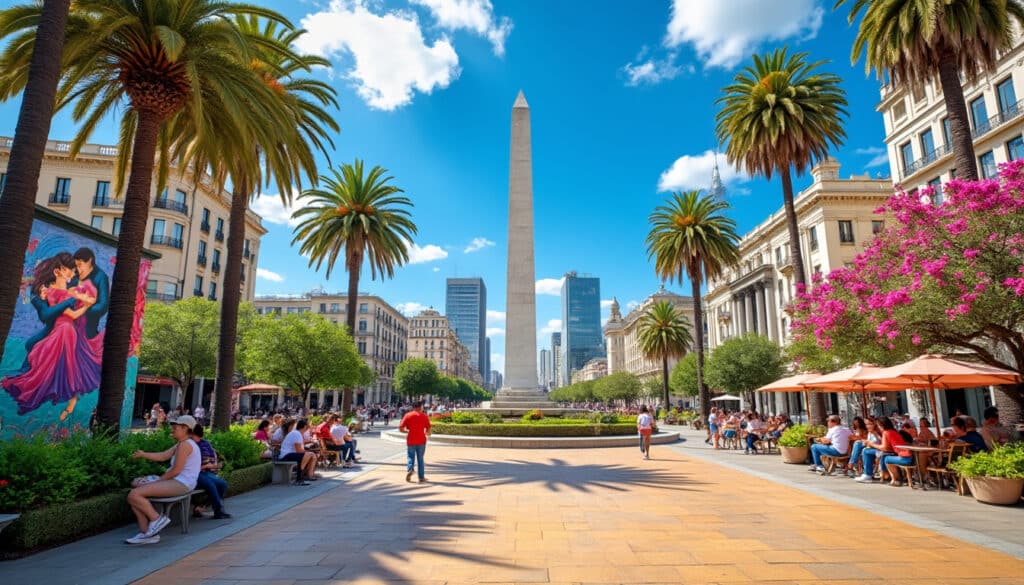
Climate & Weather in Buenos Aires
The mesmerizing city of Buenos Aires, where the tango rhythms and historic architecture intertwine, offers a climate as multifaceted as its vibrant culture. As Argentina’s bustling capital, it entices travelers year-round with a warm, humid subtropical climate. Visitors wander through…

When thinking about Buenos Aires, images of vibrant tango, bustling streets, and warm climates might come to mind. However, the story of Buenos Aires includes the lesser-known cold weather that grips this fascinating city during the winter months. This unique…

Flooding and natural risks in Buenos Aires
Buenos Aires, a city known for its vibrant culture and bustling streets, faces significant challenges from natural risks, particularly flooding. As climate patterns shift and urban areas expand, the frequency and intensity of these occurrences have escalated, affecting both the…
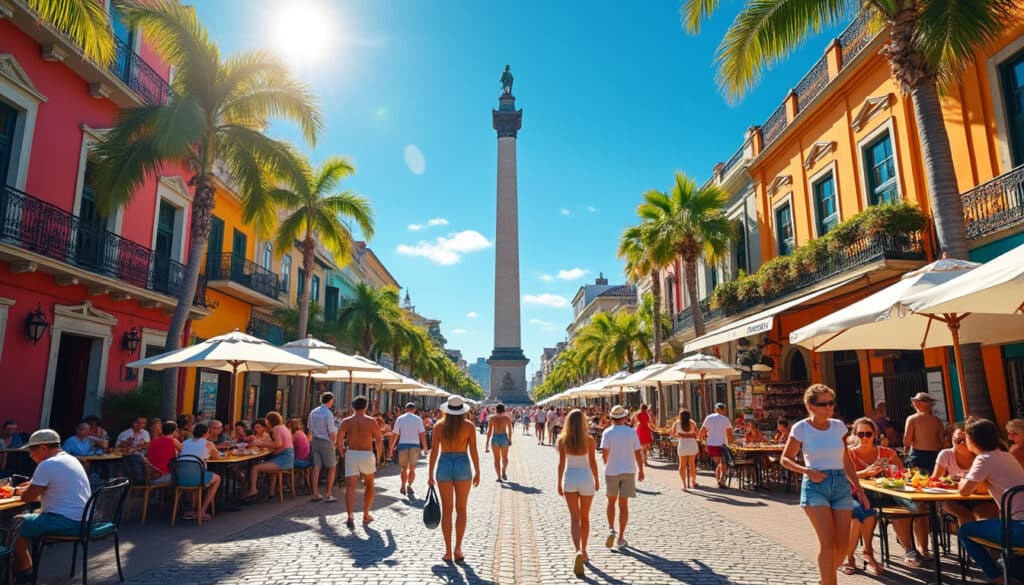
The vibrant city of Buenos Aires is not only famous for its tango beats and cultural richness but also for its unique weather patterns that shape the life of its residents and captivate the imagination of visitors. As we step…
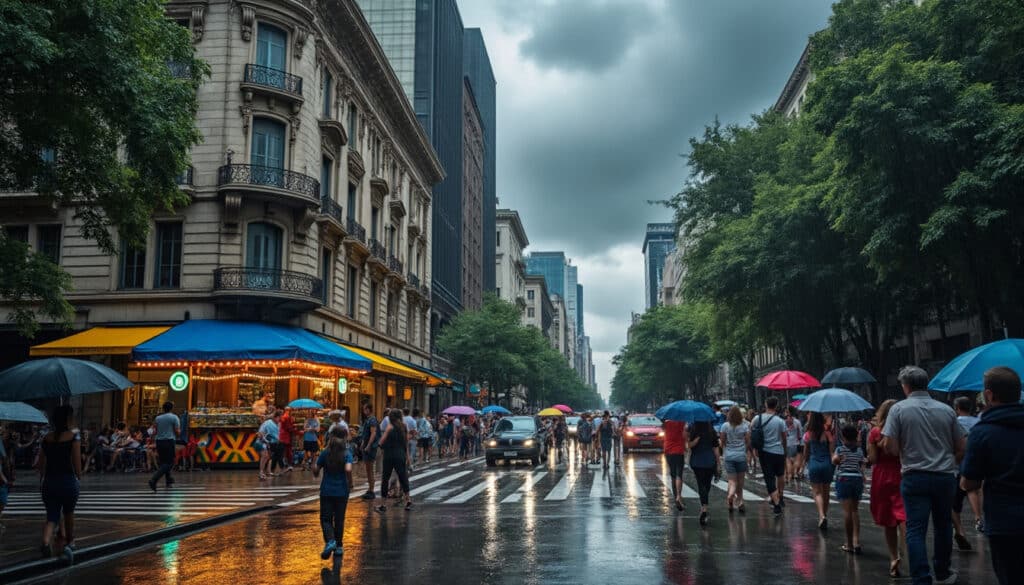
The enchanting city of Buenos Aires boasts a distinctive climate, marked by high humidity levels and a humid subtropical atmosphere. As the hub of Argentine culture, this vibrant metropolis is not only known for its passionate tango, historic architecture, and…

Is Buenos Aires warm throughout the year?
Buenos Aires, the bustling capital of Argentina, with its lively tango rhythms and vibrant culture, poses a climate allure just as engaging as its colorful streets. As one of South America’s popular tourist destinations, understanding the city’s weather patterns remains…
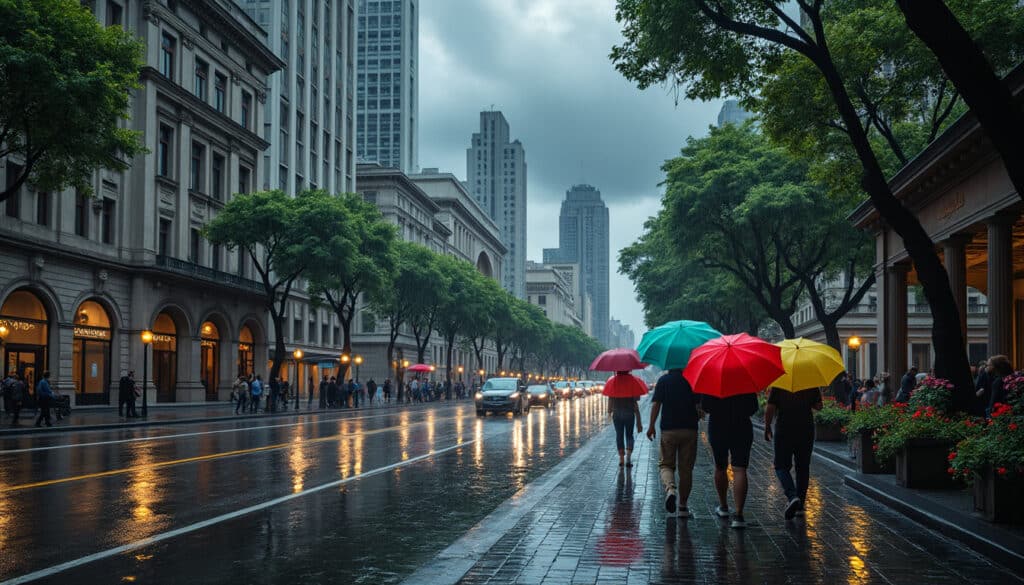
Rain and precipitation in Buenos Aires
Buenos Aires, a bustling metropolis known for its vibrant culture, tango music, and exquisite cuisine, experiences a complex and diverse climate that might surprise both residents and tourists. This city, located on the southeastern coast of South America, is graced…
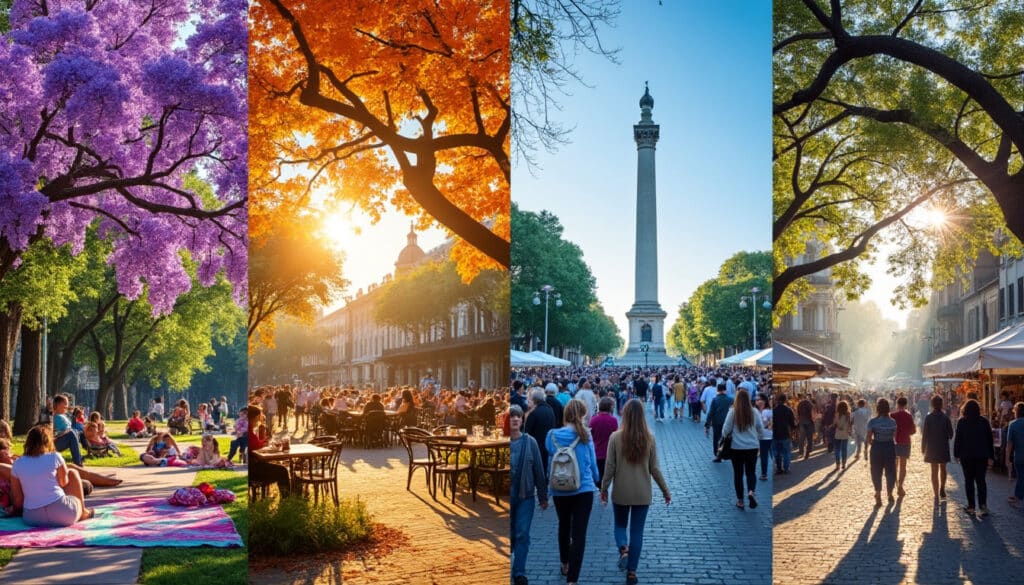
Buenos Aires, the vibrant capital of Argentina, offers a dynamic climate that enriches both the lives of its residents and the experience of its many visitors. Throughout the year, the city experiences a range of weather patterns that mirror the…
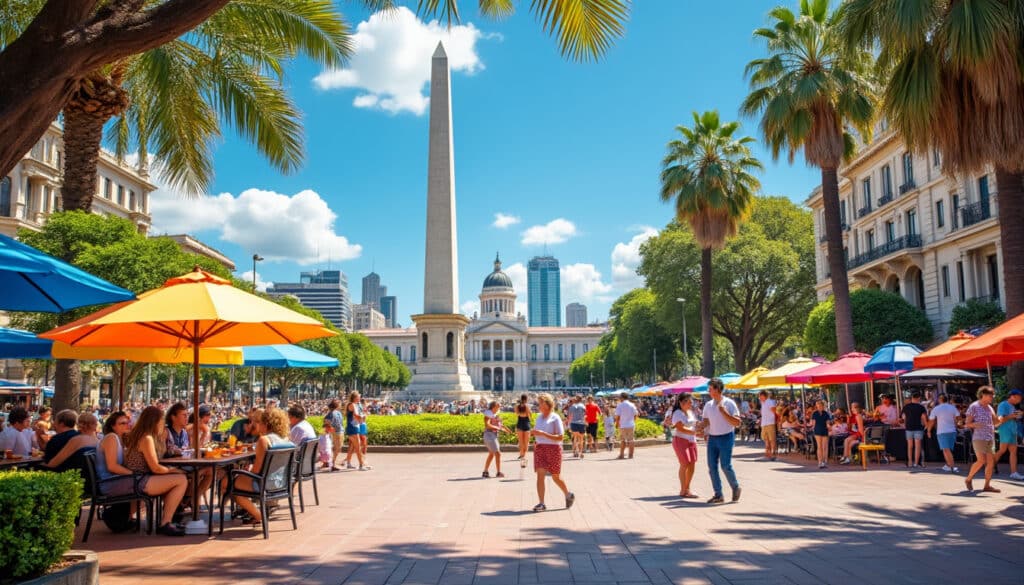
Buenos Aires, the vibrant heart of Argentina, is a city where the rhythm of tango dances in harmony with the ebb and flow of its varied climate. The city’s temperatures are a fascinating dance between the warmth of summer sun…
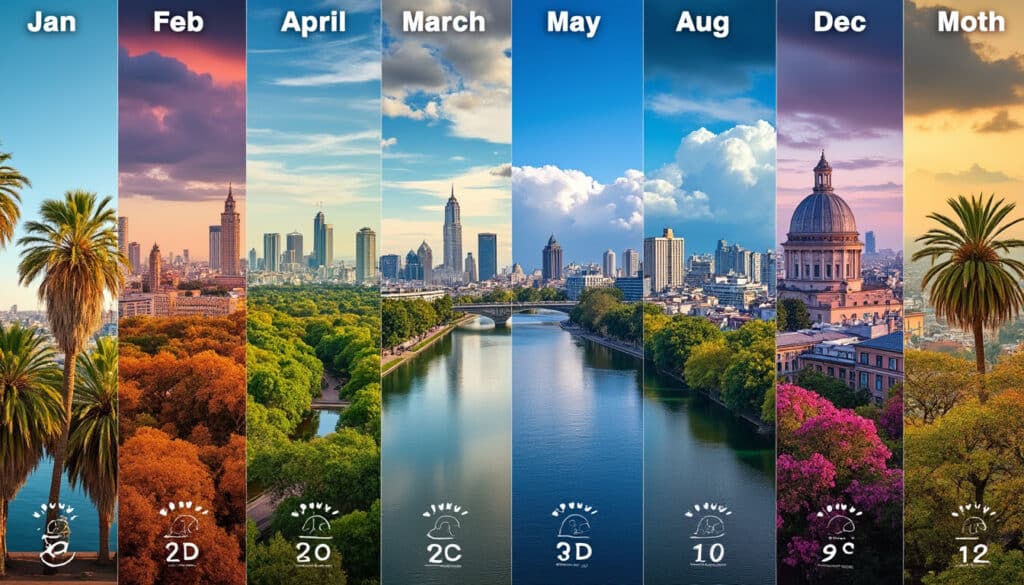
Weather in Buenos Aires by month
Buenos Aires, with its rich tango culture and vibrant city life, offers a distinct climate experience throughout the year. The city’s weather varies significantly between the warm, humid summers and the mild, fog-kissed winters. Understanding Buenos Aires’ weather patterns can…

What is the weather like in Buenos Aires?
Buenos Aires, known for its vibrant culture and lively atmosphere, boasts a weather pattern that is as varied as the tango rhythms that echo through its streets. Travelers arriving in the city are often greeted by a climate that is…

